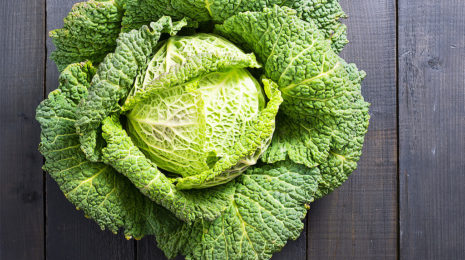This article explores the origins and historical background of vegetable, its nutritional value, its role in Italian and international cuisines, as well as cultivation and storage techniques. Additionally, we will delve into interesting facts about Cavolo Nero and its representation in art, literature, and film. By the end of this article, you will have a comprehensive understanding of this versatile vegetable.
What is Cavolo Nero?

Historical Background and Origins
Cavolo Nero has a long history dating back to ancient times. It is believed to have originated in the eastern Mediterranean and was widely cultivated in ancient Rome and Greece. The vegetable played a significant role in Mediterranean diets due to its ability to withstand harsh growing conditions. Over time, it spread to other regions of Europe and became particularly popular in Italy.
Nutritional Value and Health Benefits
Cavolo Nero is packed with essential nutrients, making it a valuable addition to a healthy diet. Here are some of the key health benefits associated with consuming:
- Promotes Heart Health: Excellent source of potassium and fiber, both of which contribute to heart health. Potassium helps regulate blood pressure, while fiber helps lower cholesterol levels.
- Supports Digestive Health: The high fiber content promotes healthy digestion and helps prevent constipation. It also contains glucosinolates, which can support the growth of beneficial gut bacteria.
- Boosts Immunity: Rich in vitamins A, C, and K, as well as antioxidants. These nutrients play a vital role in boosting the immune system and protecting the body against infections and diseases.
- Supports Eye Health: The high levels of lutein and zeaxanthin in Cavolo Nero contribute to eye health by protecting against age-related macular degeneration and cataracts.
- Anti-inflammatory Properties: Contains compounds with anti-inflammatory properties, such as kaempferol and quercetin. These compounds may help reduce chronic inflammation and its associated health risks.
Cavolo Nero in Italian Cuisine
This type of cabbage is an integral part of traditional Italian cuisine. It is commonly used in dishes such as Ribollita, a hearty Tuscan soup, and Pappa al Pomodoro, a tomato and bread soup. The vegetable’s robust flavor and texture make it an ideal addition to pasta dishes, risottos, and salads. It can be sautéed, steamed, braised, or incorporated into sauces, adding a depth of flavor to various Italian recipes.
Cavolo Nero in International Cuisines
Beyond Italy, Cavolo Nero has gained popularity in international cuisines. Chefs and home cooks worldwide have embraced its unique flavor and versatility. In addition to being used in salads and sautés, it has found its way into stir-fries, smoothies, and even chips.

Growing and Harvesting

Popular Varieties of Cavolo Nero
While Cavolo Nero is the most commonly known variety, there are other kale cultivars worth exploring. Lacinato kale, also known as dinosaur kale or palm kale, has a similar appearance to Cavolo Nero but with a slightly sweeter taste. Red Russian kale, with its purple stems and frilly leaves, offers a milder flavor profile. Siberian kale, curly kale, and ornamental kale are also popular choices, each with its own unique characteristics.
Proper Storage Techniques
To maintain the freshness and flavor of Cavolo Nero, proper storage techniques are crucial. Here are some tips:
- Rinse: Before storing, rinse the leaves with water to remove any dirt or debris.
- Dry: Thoroughly dry the leaves using a salad spinner or by patting them gently with a clean towel.
- Wrap: Wrap the leaves loosely in a damp paper towel or place them in a perforated plastic bag to maintain moisture.
- Refrigerate: Store Cavolo Nero in the refrigerator’s crisper drawer, where it can stay fresh for up to a week.
Freezing, Blanching, and Canning Methods
If you have a surplus of Kale, freezing or canning it can help preserve its freshness for an extended period. Here’s how:
- Freezing: Blanch the leaves in boiling water for a minute, then transfer them to an ice bath to stop the cooking process. Pat them dry, pack into airtight containers or freezer bags, and store in the freezer for up to six months.
- Blanching: Blanching involves briefly boiling the leaves to preserve their color and texture. After blanching, the leaves can be used immediately or stored in the refrigerator for a few days.
- Canning: Cavolo Nero can be canned for long-term storage. It is essential to follow proper canning techniques and guidelines to ensure safety and maintain quality.

Interesting Facts and Trivia about Cavolo Nero
- Cavolo Nero is often referred to as “black kale” due to its dark green leaves that appear blackish.
- It is a key ingredient in the traditional Italian New Year’s dish, Cotechino con Lenticchie, which symbolizes prosperity and good luck.
- Cavolo Nero has been cultivated in Tuscany for centuries and is considered an essential component of the region’s culinary heritage.
- The vegetable is known for its hardiness, with its leaves remaining sweet and flavorful even after being exposed to frost.
Cavolo Nero in Art, Literature, and Film
Cavolo Nero’s unique appearance and cultural significance have inspired its representation in various art forms. It has been depicted in still-life paintings, mentioned in Italian literature, and even featured in films that celebrate Italian cuisine. Its rich color and distinct shape make it an appealing subject for artists and writers alike.
Conclusion
Cavolo Nero, with its rich history, distinctive flavor, and exceptional nutritional value, has earned its place in both traditional Italian cuisine and international dishes. From promoting heart health to supporting digestion and boosting immunity, this leafy green offers a range of health benefits. Whether enjoyed in soups, salads, stir-fries, or smoothies, Kale adds a touch of vibrancy and depth to any culinary creation. So next time you’re seeking a versatile and nutrient-packed vegetable, consider incorporating this cabbage into your kitchen repertoire.
Video: Cavolo Nero
FAQ
While Cavolo Nero and regular kale belong to the same species (Brassica oleracea), they are different varieties. Cavolo Nero has distinct dark green, long, slender leaves, while regular kale has curly or frilly leaves.
While Cavolo Nero has a unique flavor and texture, you can substitute it with other hearty greens such as regular kale, Swiss chard, or collard greens. However, keep in mind that the taste and cooking times may vary.
Yes, Cavolo Nero can be eaten raw. However, its slightly bitter taste may be more palatable when it is cooked or used in salads with complementary ingredients.
Yes, Cavolo Nero is a good source of iron, which is essential for healthy blood circulation. Incorporating it into your diet can help increase iron intake, especially when paired with foods rich in vitamin C to enhance iron absorption.
Yes, Cavolo Nero can be grown in a home garden. It thrives in cool weather and requires well-drained soil and ample sunlight. With proper care and attention, you can enjoy a fresh supply of Cavolo Nero from your own garden.










